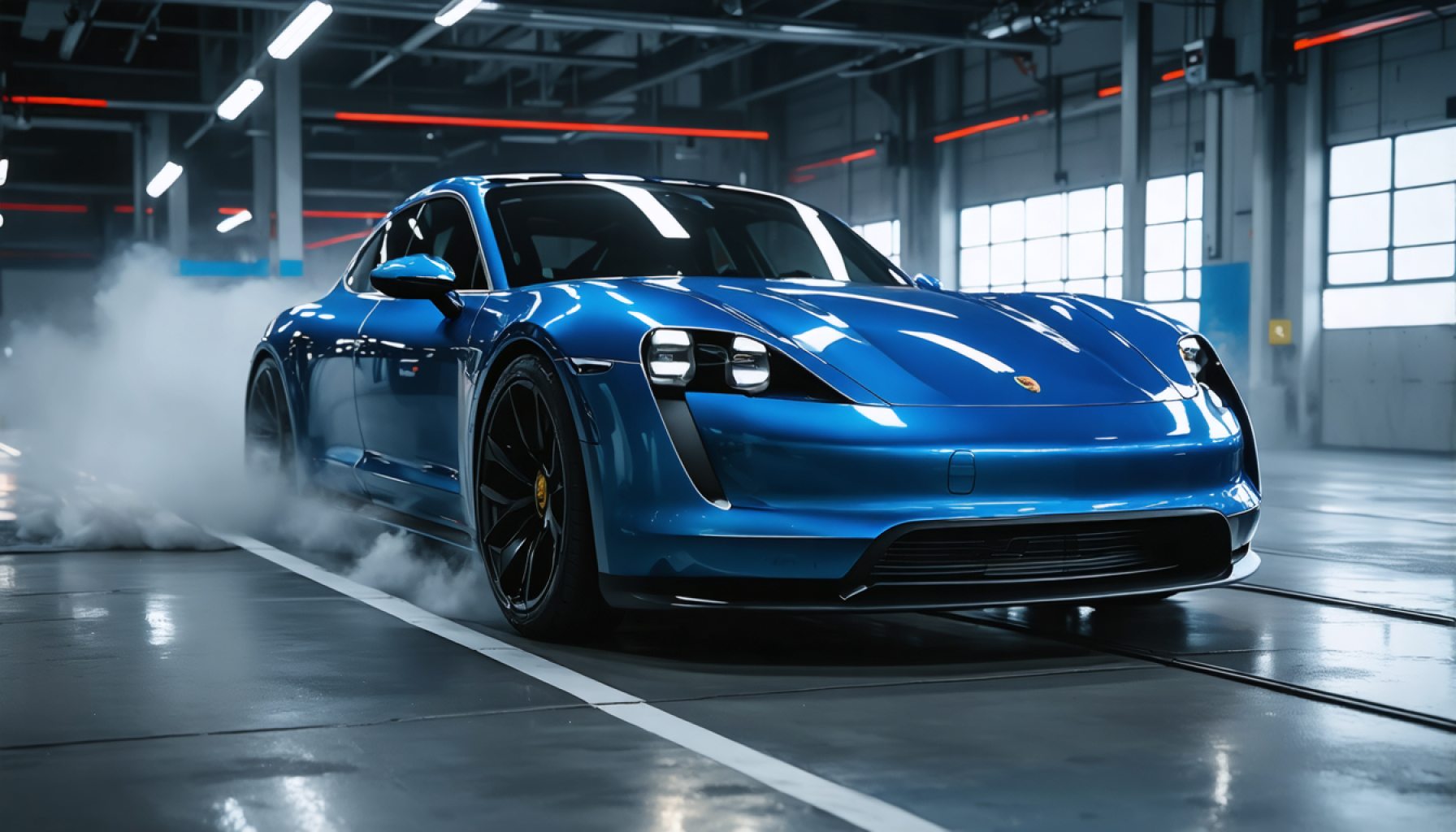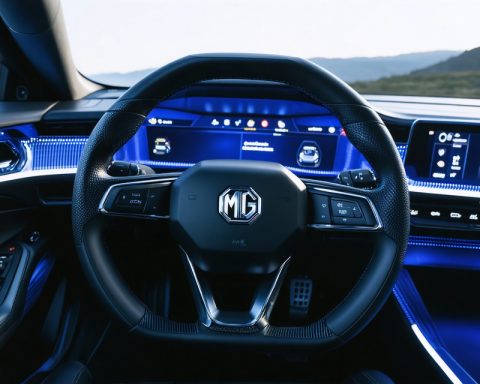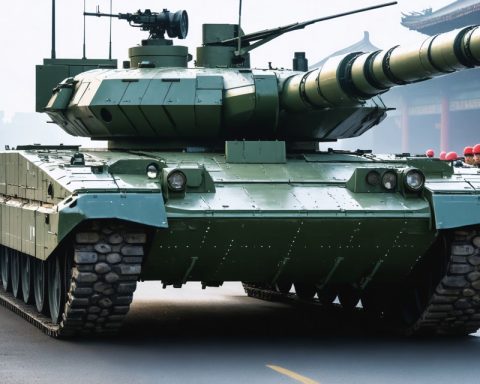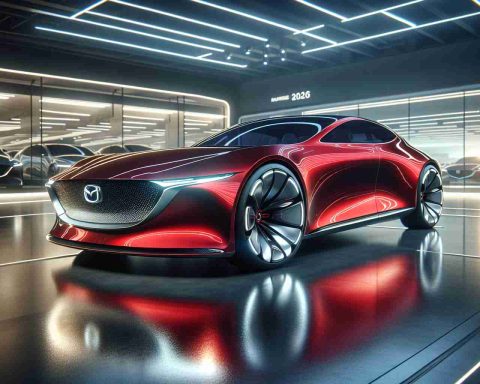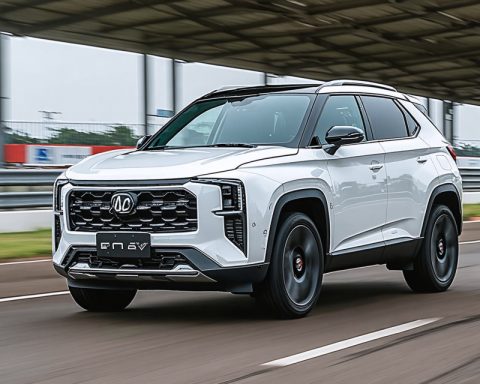- Porsche presents a groundbreaking initiative to recycle old EV batteries, emphasizing sustainability and innovation.
- The project involves extracting and purifying valuable elements like cobalt, lithium, nickel, and manganese from shredded battery cells.
- Recycled materials will be used to create new battery cells for future electric Porsche models, maintaining high standards of precision engineering.
- Barbara Frenkel leads the initiative, aligning with Porsche’s strategic response to geopolitical and regulatory challenges.
- The project addresses upcoming European battery regulations, reinforcing Porsche’s commitment to eco-conscious automotive excellence.
Amidst shifting automotive paradigms, Porsche steps into the spotlight with a daring initiative—breathing new life into old high-voltage EV batteries. This audacious project is more than a nod to sustainability; it’s a vibrant illustration of innovation. Picture this: the hum of machinery, battery cells shredded into a “black mass,” a process that epitomizes resourcefulness.
Imagine 65 tonnes of this unassuming dark granulate, once dormant in the bellies of development vehicles, now forming the bedrock of a burgeoning circular economy. It’s an alchemy of the modern age, where cobalt, lithium, nickel, and manganese are extracted with surgical precision. These elements, pivotal for the soul of electric mobility, are not just retrieved; they are purified to a standard befitting Porsche’s legacy of precision engineering.
The scene shifts as the project advances, moving from initial trials to its third act—a foray into reality where tomorrow’s battery cells will carry the imprint of reclaimed worth. These recycled components are not mere relics of their past; they are the promise of a new chapter, ready to power future Porsche models and meet the rigor of real-world performance seamlessly.
Barbara Frenkel, steering procurement with an avant-garde vision, embodies Porsche’s commitment. The initiative is a robust response to the hornet’s nest of geopolitical uncertainties and regulatory mandates looming on the 2031 horizon. It’s a strategic ballet of foresight and sustainability, ensuring Porsche does more than just weather the storm; it plans to own the skies.
As the European landscape braces for stringent battery regulations, Porsche stands firm, showcasing its readiness to blend eco-conscious innovation with automotive excellence. This endeavor underscores a key takeaway: in the race toward a sustainable future, mastery of resources and visionary strategies keep the wheels of progress turning, ensuring that what once was obsolete can redefine the forefront of mobility.
Revolutionizing the EV Industry: How Porsche’s Battery Recycling is Shaping the Future
Introduction
Porsche’s initiative to recycle old high-voltage EV batteries marks a significant leap in sustainable automotive practices. By transforming batteries into “black mass” and extracting valuable elements like cobalt, lithium, nickel, and manganese, Porsche reaffirms its commitment to environmental responsibility and advanced engineering. This process not only meets but potentially exceeds the rigorous performance standards synonymous with Porsche’s brand.
Insights & Predictions
Porsche’s approach addresses two critical industry challenges: resource scarcity and environmental sustainability. With regulators increasingly focused on extending battery life cycles and reducing waste, Porsche’s pioneering methods may set a new industry standard.
1. Resource Mastery: By reclaiming essential minerals, Porsche reduces dependence on raw material extraction, mitigating geopolitical risks associated with sourcing.
2. Sustainability Trends: As electric vehicles (EVs) gain popularity, the demand for sustainable practices grows. The recycling of battery components supports a circular economy, echoing broader industry sustainability trends.
3. Performance and Innovation: Ensuring that recycled materials meet Porsche’s high standards showcases the potential for sustainable components to rival new materials in performance, potentially affecting how manufacturers worldwide approach EV production.
Tutorials & Compatibility
To further encourage the adaptation of sustainable practices, here are steps and a tutorial on how others might replicate Porsche’s innovative recycling process:
1. Initial Collection and Sorting: Gather used batteries from dealerships and service centers. Implement an efficient sorting mechanism to separate reusable components.
2. Shredding and Granulation: Develop systems for safely dismantling batteries and creating “black mass” granulate.
3. Extraction Process: Utilize advanced extraction techniques to purify metals like cobalt, lithium, nickel, and manganese from the granulate.
4. Reformation: Use the reclaimed materials to create new battery cells, ensuring they meet rigorous testing standards.
5. Integration into New Products: Incorporate recycled cells into new EV models, ensuring performance and safety standards are maintained.
Market Forecasts & Industry Trends
The EV battery recycling market is expected to grow substantially. According to a report by Allied Market Research, the global EV battery recycling market will reach $2.27 billion by 2025 (Allied Market Research), as manufacturers seek eco-friendly alternatives to meet increasing regulatory pressures.
Pros & Cons Overview
Pros:
– Reduces environmental impact and reliance on finite resources.
– Aligns with global regulatory trends towards sustainability.
– Ensures resource security amidst geopolitical tensions.
Cons:
– High initial costs for developing and implementing recycling infrastructure.
– Technical challenges in maintaining quality and performance of recycled materials.
Conclusion and Recommendations
Porsche’s battery recycling initiative sets a precedent for others to follow in the automotive industry. By focusing on sustainable resource management, Porsche not only enhances its brand prestige but also actively contributes to a greener future. Automotive companies should consider similar strategies to future-proof against both resource shortages and regulatory challenges.
Actionable Quick Tips:
– Automakers should invest in R&D to create efficient battery recycling processes.
– Partnerships with recycling firms can accelerate technology development.
– Companies should advocate for and invest in public policies that support sustainable recycling and reuse practices.
For more insights into sustainable practices and innovation in the automotive industry, visit Porsche.
